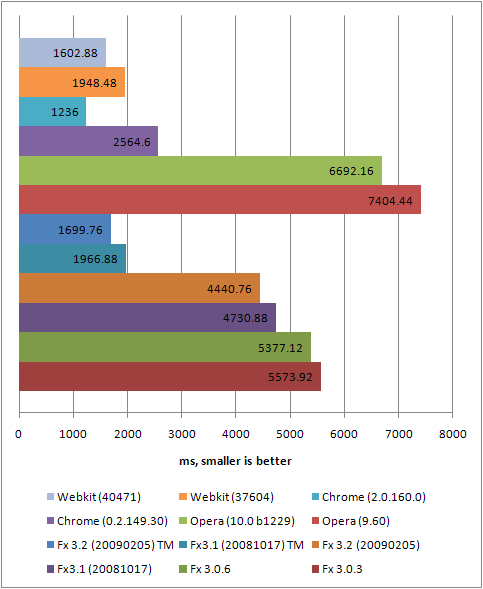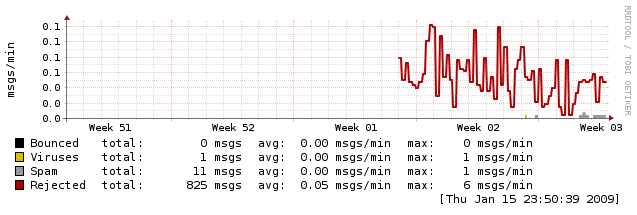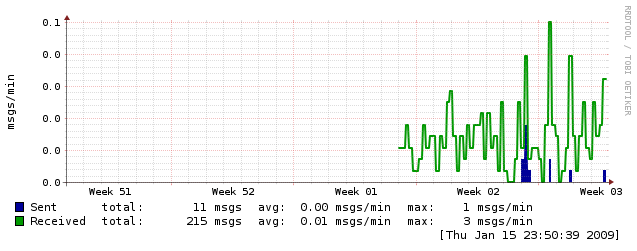Almost a year ago, I signed up for daytum.com.
The premise of the site derives from Nicholas Felton‘s “annual reports” (linked in the previous post) – keep track of something you do (trips to the gym, drinks, distance walked, whatever; at one point I noticed someone was tracking their trips to the toilet and what they did while they were there…) and the site presents it with some pretty graphs in the same sort of visual style as he uses and also with some basic analysis (time since the last entry etc.). To be honest, I didn’t expect to keep it up (fnar) for anywhere near a year, but for some reason I’ve found it strangely compelling.
To the numbers…
After a year, I suppose now is as good a time as any to have a look at some of the numbers. From New Year’s Day 2009 to midnight on the 28th December, I’ve had:
- 958 cups of tea
- 719 glasses of water (with or without diluting juice)
- 620 glasses of orange juice
- 474 glasses of Irn Bru
after that, the quantities get a lot smaller (best of the rest: 192 cups of coffee; keeping up the rear: 4 bottles of M&S Christmas Orange/Grape/Cranberry stuff).
That still means, though, that in an average day I get through about 3 cups of tea, 2 glasses of water, 2 glasses of orange juice and a glass of Irn Bru (amongst other things).
Some other stuff I tracked:
- circa. 485 car journeys (1.34 a day)
- 230 bus journeys (almost twice every 3 days)
- 141 shaves (i.e. twice in five days, or once every 2 weekdays if you assume every time was on one)
New things I’d like to see
On the last part, one feature that I think might be useful, analytically, would be separating weekends and weekdays or perhaps taking account of the academic year (i.e. separate terms or term-time and otherwise) Daytum do let you download the data in CSV format, so it’s possible to deal with those issues; I just can’t really be bothered doing it myself.
One other feature I’d use would be a more native interface for my current mobile OS, Symbian S60. Not having to use the phone’s web browser and the iPhone interface (which works relatively well, in fairness) would be nice. Daytum are apparently working on an API though, so it should be possible to build some sort of application to do it.
The last thing is the future – what Cool New Thing™ should I start tracking this year?
I think I’d be interested in the total distance I travel, or better still a breakdown of time and/or distance in a car/on a train/walking. I’ve toyed with using Nokia Sports Tracker on my phone (Nokia N96 all-black) but it flattens the battery in no time at all because it insists on using the phone’s GPS and data connection – a whole day would take a miniature fusion reactor to keep it going. Which kinda sucks.
Something I think Daytum could do better at is showcasing the novel things people use the service for.
There’s a premium version, which gets you more features (separate your stuff into pages, some privacy settings) as well as more categories and items to store data with. I use the free version, mostly because I’d struggle to justify the cost (four US Dollars per month). If I bumped against some of the limits of the free account (here’s the opportunity to promote novel, or otherwise, uses and make some money out of it), I’d consider upgrading.














You must be logged in to post a comment.